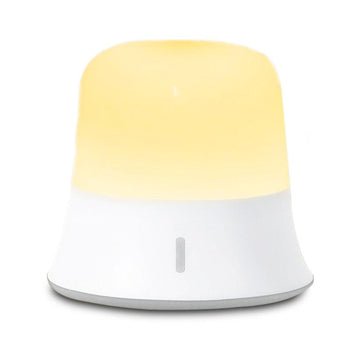"How do I get my baby to have some kind of schedule?" This is a question we often hear from moms and dads who have newborns and infants at home. In fact, age-appropriate sleeping and feeding schedules are among our most viewed pages!
The problem is that most babies aren't ready for fixed, 24-hour routines until around 6 months of age. Sure, some babies are ready sooner (some 3-month-olds are so predictable you can set your watch for them). Other babies will take longer to establish a regular schedule. However, 6 months is a reasonable average.
New and future parents sometimes wonder how they can add order and plan their children's days a little better. Alas, newborns and young babies aren't ready for strict sleeping and feeding schedules, but isn't there a way to bring some regularity to a young baby's day?
Well yes, there is a way to do it.
Introducing what we call "landmarks" into your baby's day is a gentle way to create order and routine, which will help your baby sleep better.
What are benchmarks and how do they work?
Landmarks are moments in your baby's daily life that occur at around the same time each day. There is a reason for the notion of "roughly": they are not based on precise time! A cue, or anchor, should occur around the same time of day (within 20 or 30 minutes).
How do you set milestones in your baby's day?
First landmark, wake up time
Starting with when your baby wakes up in the morning is a great way to start setting benchmarks. This technique is effective for all infants, regardless of age, and it even works for toddlers! The idea is to get your baby (or toddler) to wake up at around the same time each morning. A regular wake-up time for your baby (or toddler) can help establish continuity in the activities of the rest of the day.
Second landmark, bedtime
Bedtime is the next anchor that many parents want to focus on. Remember that a newborn's bedtime is different from that of a 4 or 5 month old child. Many newborns don't have a set bedtime because their sleep cycles are dictated by feedings, and they prefer to wake up every 2-3 hours, day or night.
From 3 or 4 months, however, most babies sleep longer (and eat less) at night. You can start setting a bedtime at this point, and then work to put your baby to bed regularly at that time. This cue, like the morning wake-up call, works well for babies and toddlers alike. Discover 10 tips for establishing a good bedtime routine (Everyone knows tip #6 but strangely no one applies it)
Third landmark, baby's nap
Nap time can also be a marker in your baby's schedule, especially the timing of the first morning and afternoon nap. You can also make meals a staple in your baby's daily schedule until he's old enough to start eating solid foods.
Benchmarks: A gentle approach to the schedule.
From the newborn stage, you can use the cueing technique to establish a minimum of order and regularity in your baby's day. Then, as your child grows, gradually increase the number of anchors until a consistent schedule emerges.
Check out our article on setting a good sleep pattern to help you lay the groundwork. Also discover the one that explains your newborn's day/night confusion . Why does this happen and how do I fix it?
I hope this article has enlightened you on the subject. Feel free to share your experiences with us in the comments.
"Reader's special" offer
Take advantage of -30% on the entire collection >>> Sleep <<<
Take advantage of this special offer with the code
DODO30
Do you want your little one to spend all their nights?
In this free guide , you'll discover 5 things you absolutely need to know.








































